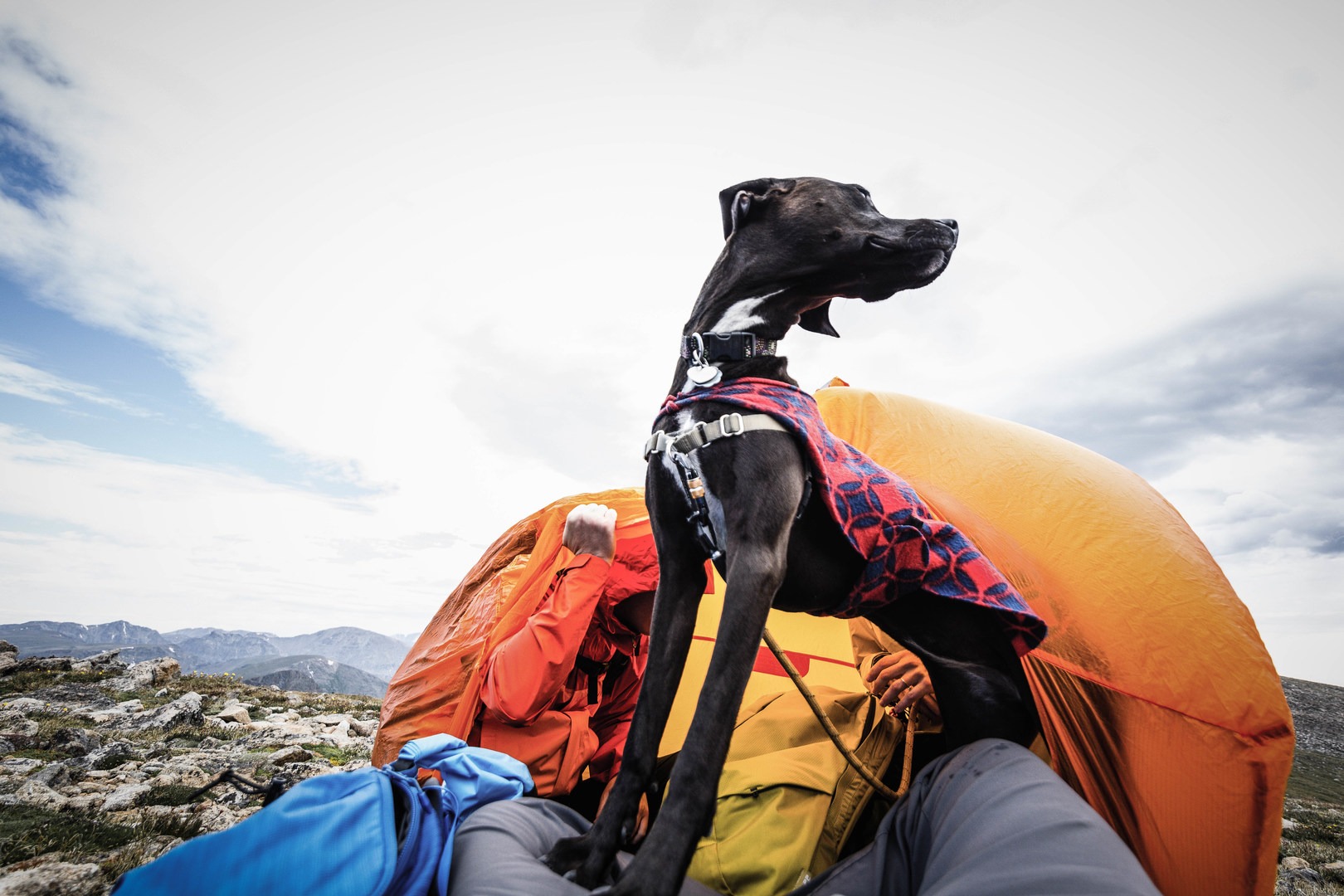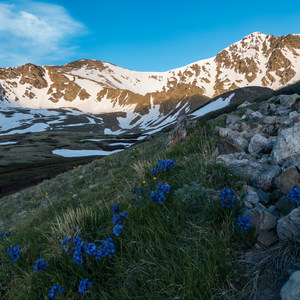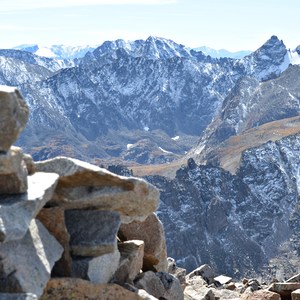Rab Superlite Shelter 4 specs
- Ultra lightweight windproof and waterproof ripstop nylon siliconised fabric
- Stripped down design to save weight
- Vents for airflow and waterproof seats for comfort
- Reflective logo and piping for safety
- Built-in stuff sack to save weight
- Weight: 320 g
- Dimensions: 9 x 5 inches (stuffed)
Where to get it
- Price: $125
- Rab Equipment
- Moosejaw
The Bottom Line: A just-in-case windproof and waterproof four-person shelter that is light enough to keep in your pack even on short day hikes, easy to setup, easy to tear down, and a welcome addition when the weather takes a turn for the worse. Just don't let it go when it's windy.

Inside the shelter. Photo by Jason Leach.
NOTE: In 2006, the OutdoorDesigns tent, bivy, and bothy line was taken up by Rab Equipment, which still sells the same design today. Looking for a Rab bothy will yield better results, or you can keep an eye on Sierra Trading Post as they sometimes get older OutdoorDesign models in.
My first experience with a bothy was on a kayak expedition off the coast of Maine. I was taking a class through SUNY Plattsburgh's Expeditionary Studies Program. We were all in drysuits, and we had stopped for a break on one of the tiny islands that dot the coastline when a small storm blew in. Our professor walked to his boat and took out what looked like a small tent in a stuff sack. He proceeded to yank out a ton of fabric, then told us to pull it over ourselves and sit on it. It reminded me of one of those giant parachutes I used in gym class in grade school. Moments later we were sipping warm tea, drying off, and warming up while the storm blew past. Sometimes it's a few moments of comfort in the outdoors that can make or break a trip, particularly if you are guiding clients or introducing someone to the outdoors. Since that time I have always kept my eye out for a bothy I could use regularly and would not complain about carrying on a day hike (the first one was meant for eight people and packed rather large). They seem to be more popular outside of the United States; our professor was from the U.K. originally, and most bothy manufacturers seem to be based outside of the U.S. This makes it a struggle to find them a reasonable price here in the United States. I was fortunate enough to catch a shipment of them from Sierra Trading Post, and I grabbed one by OutdoorDesigns for $30 on sale. It has since become a staple in my packs.
Not to be confused with a bivy, a bothy is a quick and temporary pop-up shelter where the people are the "poles." It is designed to be pulled over you and your group in a flash and provide a warm reprieve from the elements. It is not designed as a sleeping system like a bivy, but it is great in an emergency or even just for a lunch break.
There is not much to the design of a bothy. It basically is a cube of nylon or silnylon fabric that has an open bottom, usually some reflective seam piping, and a few holes for ventilation. They are windproof and generally waterproof, and they look like a tent setup without tent poles. Heavier models have a window viewing port that can be handy, but you add weight for the convenience.
The Superlite Shelter 4 can comfortably fit three people (and a medium sized dog), and four will work if you are careful in how you arrange people. I point this out because, in the times I have used the bothy, I am usually more concerned with getting out of the elements than how I arrange folks in it. This often means I pull it out and people pile in quickly, often leaving the shelter a bit skewed and us having to try and shift it a bit from the inside, which is hard to do. There are waterproof seats for each person to sit on, but since my partner and I are over 6 feet tall, it usually means we either need to slouch or that we are sitting loosely on the edge of a seat.
As mentioned, the humans create the structure for the shelter, which makes setup super fast but can also mean you have tent fabric billowing around you if the shelter is not held taut. It is a minor annoyance that is easily outweighed by the fact that the poles also quickly warm up the shelter and provide some comfort, particularly if it is cold. An important note: If a person leaves the shelter, the others will often have to take up the slack or face more fabric billowing in their face.
Which brings me to what can be one of the biggest drawbacks to using a bothy, how it behaves in the wind. The irony here is that it is designed to be used in windy environments, but you will find two challenges with this: 1) It is literally a giant kite and 2) it can be incredibly noisy inside. To solve for the first problem, I recommend that you have a solid grip as you are removing it from its stuff sack, and I would encourage you to enlist your group to get a hand on it. The faster you remove it from the stuff sack and get at least one person under it and sitting on it, the safer you are. For the second problem I recommend trying to arrange yourself to keep the bothy as taut as possible to lessen the impact of the wind. When we used the Superlite to escape the wind for a longer break on Mount Audubon, I almost lost it in the wind as I was removing it. Luckily I was standing into the wind, so it blew into my body and not off the mountain. With the wind gone, we were quickly able to warm up, grab some food, check the map, and head out a bit refreshed. Once we left the shelter we quickly stuffed the shelter back into its sack, and we were moving again without much added time.
As someone who used to run guided trips and adventure-based counseling sessions with troubled youth, I would say that my mind has been shaped to consider safety above everything in the outdoors (even weight). Now that I am usually doing personal trips, I have never been able to shake that mindset. Most disasters in the outdoors are preventable, and while there are certainly many folks out there with great skill sets, sometimes a little extra weight brings a lot more protection. The Superlite 4 has become a staple in my go-to kit. I consider it my 11th essential item when I head out. It's size and weight are negligible compared to its benefits; thankfully, most of the time I take it out it is just to show folks what it is and what it can do.







Comments
It's a reference to small repurposed crofters cottages, and huts that dot the Scottish Highlands and Lowlands. They are set in many impossible locations. They are so popular that they now appear in England and Wales too. And they are so beloved that the society receives enough money in donations to make them free to use.
More info here:
https://www.mountainbothies.org.uk/
Sign In and share them.